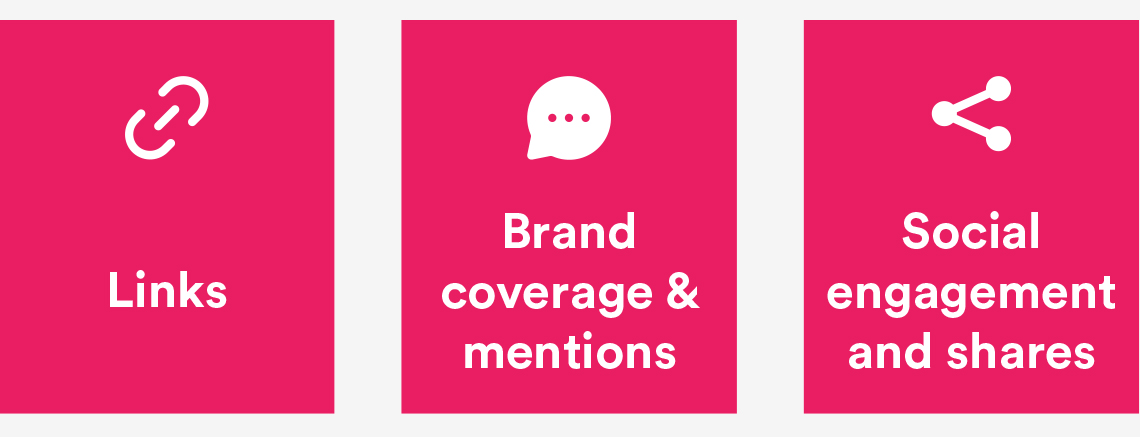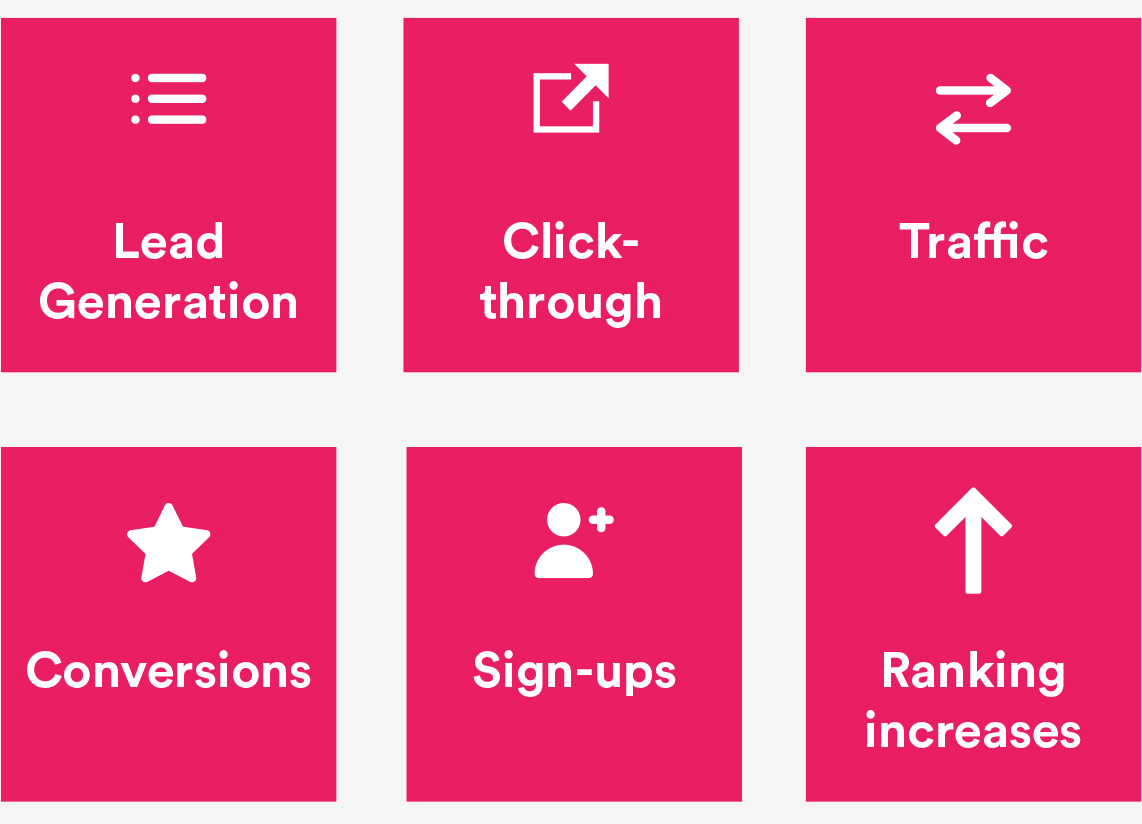What is outreach and why should you care about doing it right?
Outreach is the act of reaching out and telling the outside world about your content. What that content is will vary—it could be a shiny, elaborate hero piece, or it could be a simple interview, comment or press release—the list really does go on!
Done right, outreach is how your marketing content finds its way to the people who matter. Done wrong, it’s a recipe for wasted budget and you might even be damaging your brand. Frankly, if you’re doing outreach badly, you may as well just not do it at all.
The goals of outreach
The goals of outreach are as varied as the content to which they’re tied. However, some common goals that we encounter at Builtvisible are:

These direct outcomes from outreach could then have various desired impacts, such as:

The above list is by no means exhaustive, but the theme that runs throughout is getting a clear, tangible and measurable return on outreach investment, and understanding what you’re trying to achieve from the very beginning.
Before you get started
In this blog series, we’ll explore the various steps involved in outreach. But before we unpack our audience-first approach and any targeting or contacting tips, there are two very important first steps to take:
Get to know your content
It’s no good building an outreach list if you don’t really understand what you’re going to be selling. Any questions your outreach targets have will be directed at you, so not knowing the ins and outs of what you’re promoting could hurt your chances of pick up. The obvious way to combat this is to spend some time getting to know the asset. Basically, become an expert in it. This is particularly crucial if you weren’t involved in production from the start.
I’ve broken this ‘getting to know your content’ step into a four-stage process:

1. Brand
Get to know the brand for whom you’re outreaching by understanding the following:
- What’s the brand’s core product offering?
- What’s the brand’s USP?
- What’s the brand’s style and tone?
- What’s the brand’s ethos?
- Any dos and don’ts?
- What’s the brand’s target audience? (This could be different from the brand’s usual target audience)
2. Context
Next, it’s time to gather important contextual insight about the asset you’ll be outreaching. Find out about and make sure you understand:
- What are the KPIs associated with the asset?
- Is there a strategy behind the asset’s production? If so, what is it?
- How does your piece fit into the wider discussion? E.g. if you’re sharing a comment about the latest financial news then read up on the current industry chatter.
3. Asset Immersion
Familiarise yourself with the asset itself, if you don’t already know it:
- Have you read all the copy attached to the final asset?
- Do you understand how it works? E.g. the methodology behind any surveys, how many numbers are being crunched behind the scenes, etc.
- Is there a backstory to how the piece came to be? Was there anything notable about the creative process that could add depth to the story?
- Is there a story behind it? If so, get to know it! For example, the story of the artist behind Staysure’s Travelling with Mental Illness was of particular interest to journalists.
- Re-read the signed-off concept, research and design briefs if relevant and available.
- Speak to other people who have been involved in the production of the asset to find out what they regard as lead, secondary and tertiary outreach angles.
4. Supplementary
Are there secondary, but supplementary outreach assets you can use? If so, get to know them, too! For example:
- Original interview material
- Alternative/additional design assets
- Raw datasets. Are there any other angles, headlines or stories you can build?
Refining outreach angles
Now that you understand what you’re working with, it’s time to refine and finalise your outreach angles and hooks.
At Builtvisible, outreach angles and hooks are at the fore of all our ideation sessions, in order to prevent our campaign assets from floundering out in the wild. These angles will naturally require a little tweaking at the point of promotion, but most of the hard graft will have already been done.
Now, it’s easy to say ‘make sure you have your angles’, but the natural question to ask is ‘what makes an angle or hook good?’
A hook in marketing—as defined by Oxford Dictionaries—is ‘a thing designed to catch people’s attention’. Indeed, a piece of content’s hook provides a journalist with an article headline—this needs to be newsworthy to stand a chance of being picked up. We validate hooks, and therefore a journalist’s possible future article headline, by judging our content on a selection of criteria (which just so happens to spell out the acronym USHER, if you find that easier to remember):
Useful: Does your content provide a useful or practical element that will be of value to your reader? E.g. ‘how to live well with type 1 diabetes.’
Surprising: Does your content have the shock factor? This could be a staggering fact, e.g. ‘study reveals that one pair of rats can produce half a billion descendants in three years!’
Hot: Does your content tap into a trending topic? E.g. ‘how to make the most of your Bitcoin investment’ during the Bitcoin boom of late 2017.
Emotional: Does your content elicit an emotional response? E.g. ‘women are more likely to be cast as a ‘hooker’ (8%) than a ‘trader’ (6%) in films about trading and finance.’
Robust: Does your content provide unique and credible data, commentary or insight? If so, put the onus on that. E.g. ‘medical nutritionist Dr. Sarah Brewer ranks our favourite hangover cures.’
In the event that outreach consideration during the production process was lacking—hopefully this will never be the case—come up with some new and/or additional angles ahead of making contact with outreach targets to ensure you’re fully equipped.
Your content doesn’t necessarily need to satisfy all of the USHER criteria, but if it ticks a few of the boxes you should have some clear hooks—and therefore headlines in mind—that just need a bit of refinement at the point of reaching out to those journalists.
At Builtvisible we also carry out preliminary outreach during the early stages of content production. Preliminary outreach is when we ask a small subset of outreach targets if they think our content idea—and therefore its likely hooks— would be of interest. Not only can you achieve early buy-in from outreach targets, but sometimes they will make suggestions or requests that will influence the way in which you develop your content and its hooks.
Look out for the next article in this series: Building your outreach list.
You can also download our full whitepaper, the Builtvisible complete guide to outreach, here.
If you’ve got an outreach brief, we’d love to help! Contact us.

Moritz
Great Article. Really like your work!